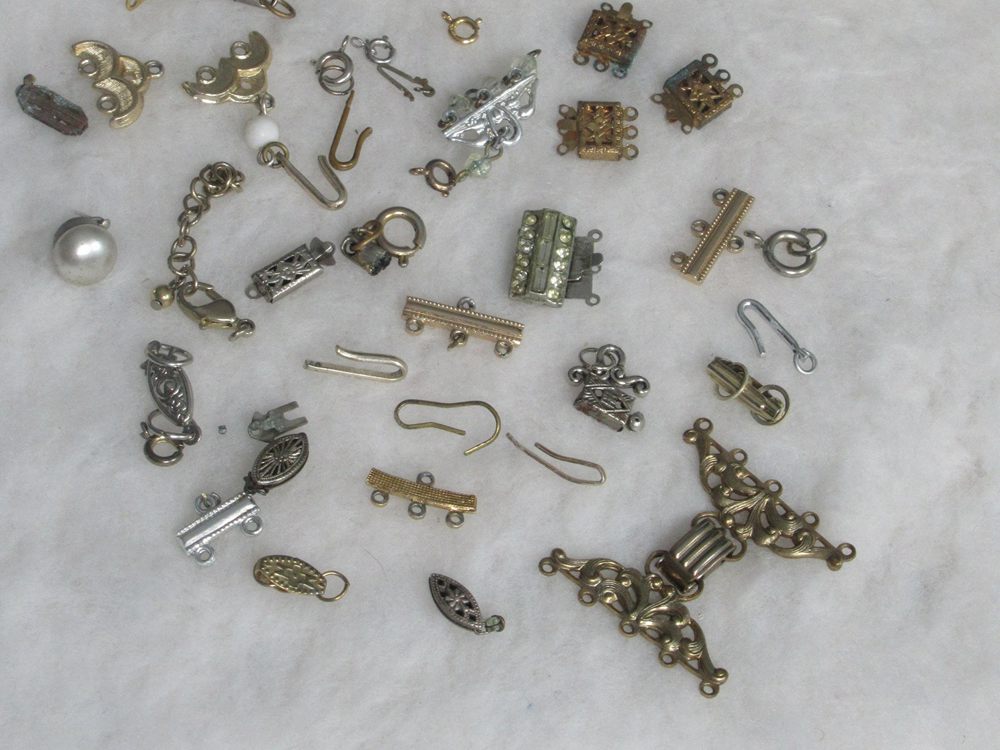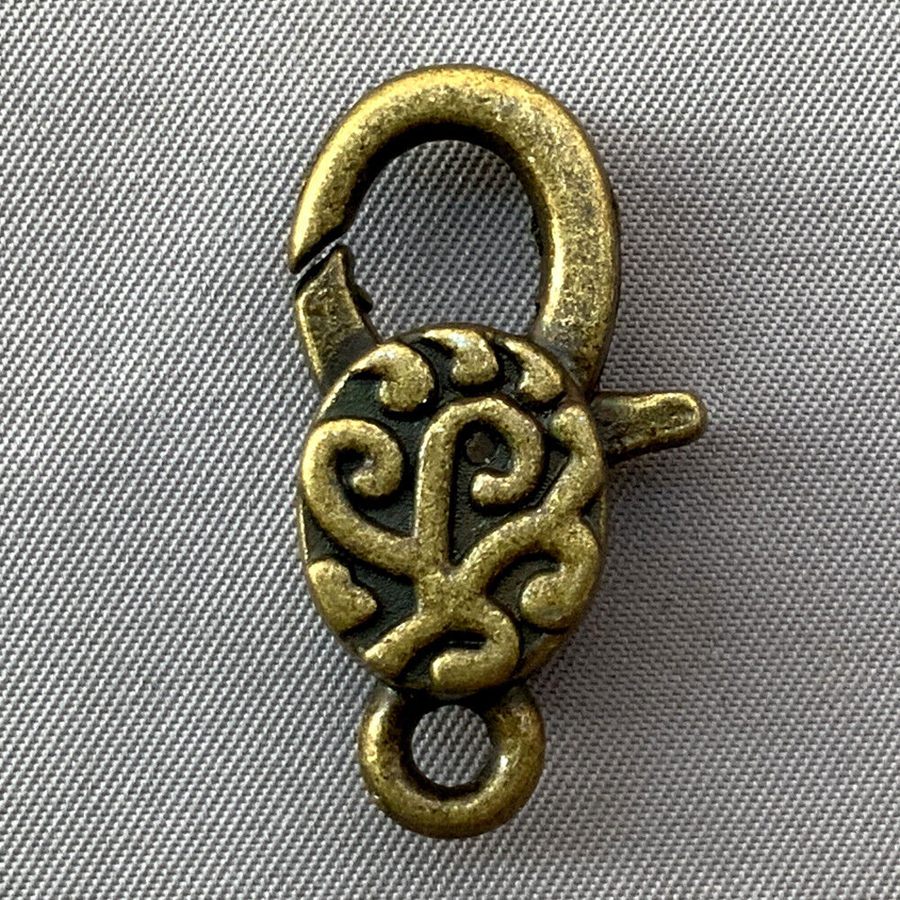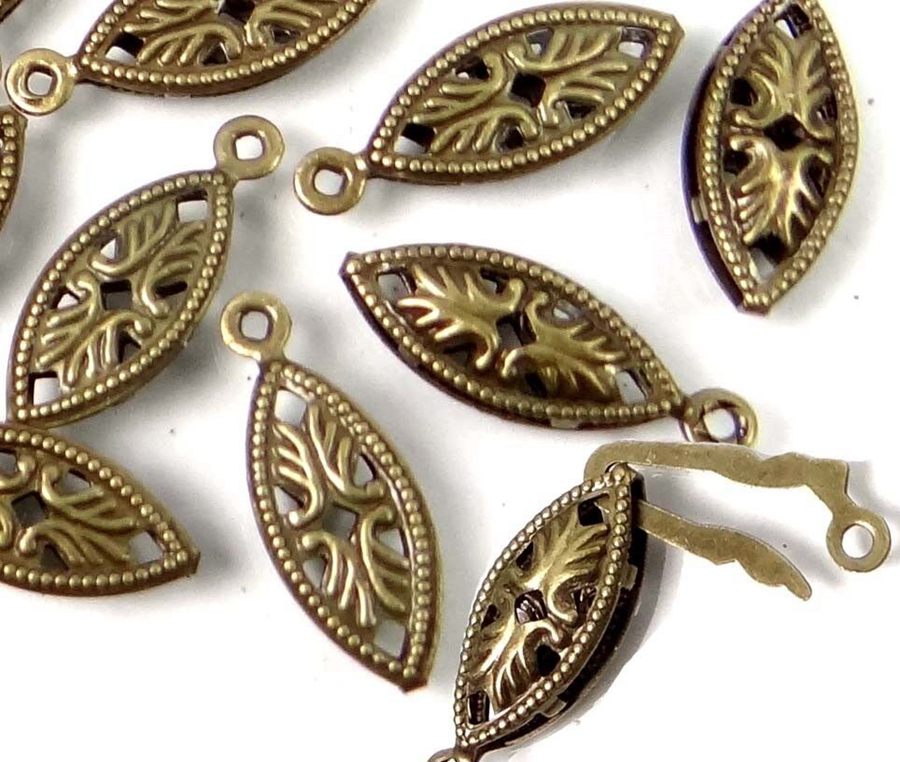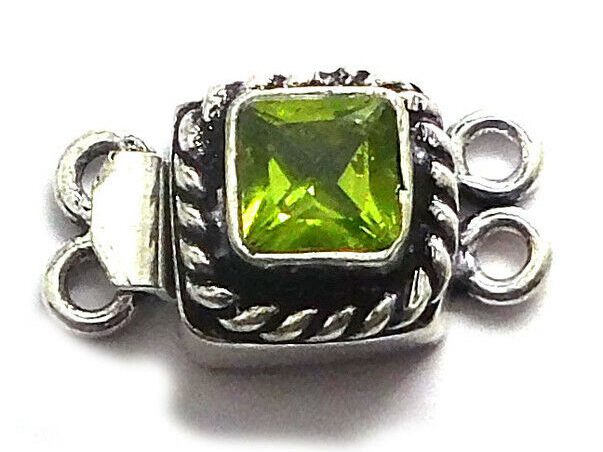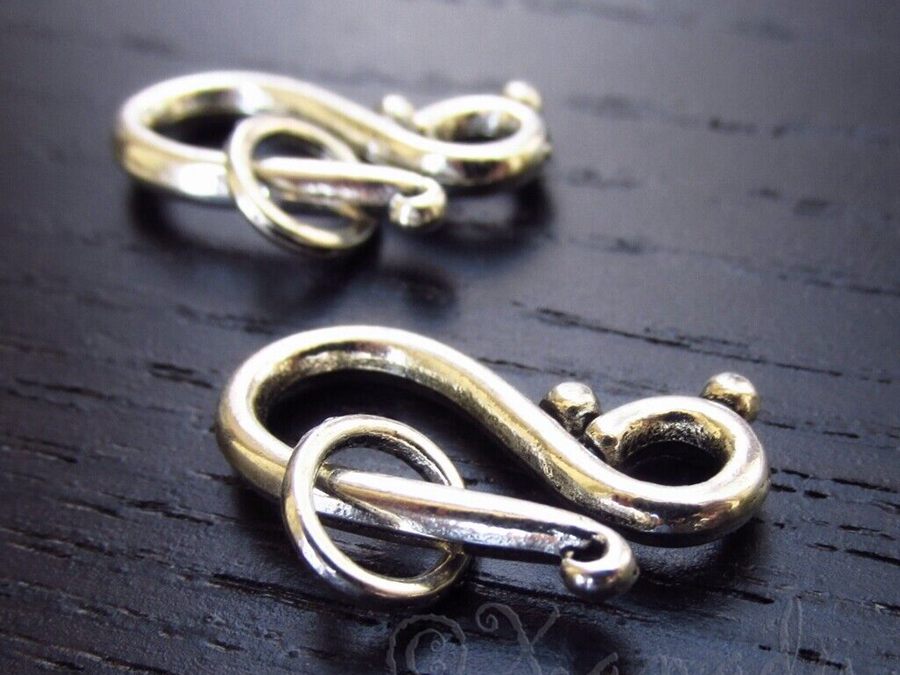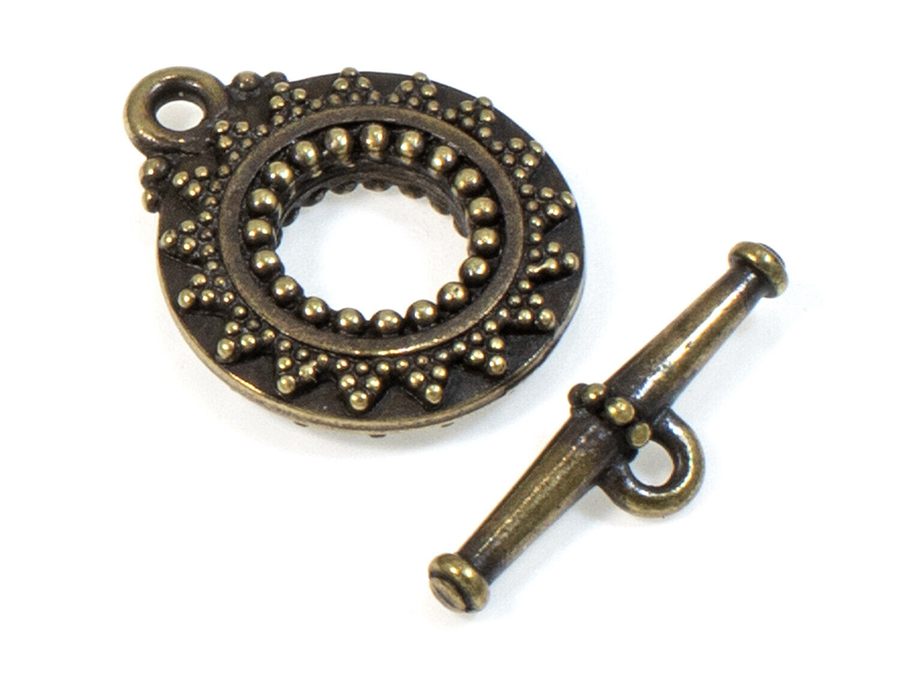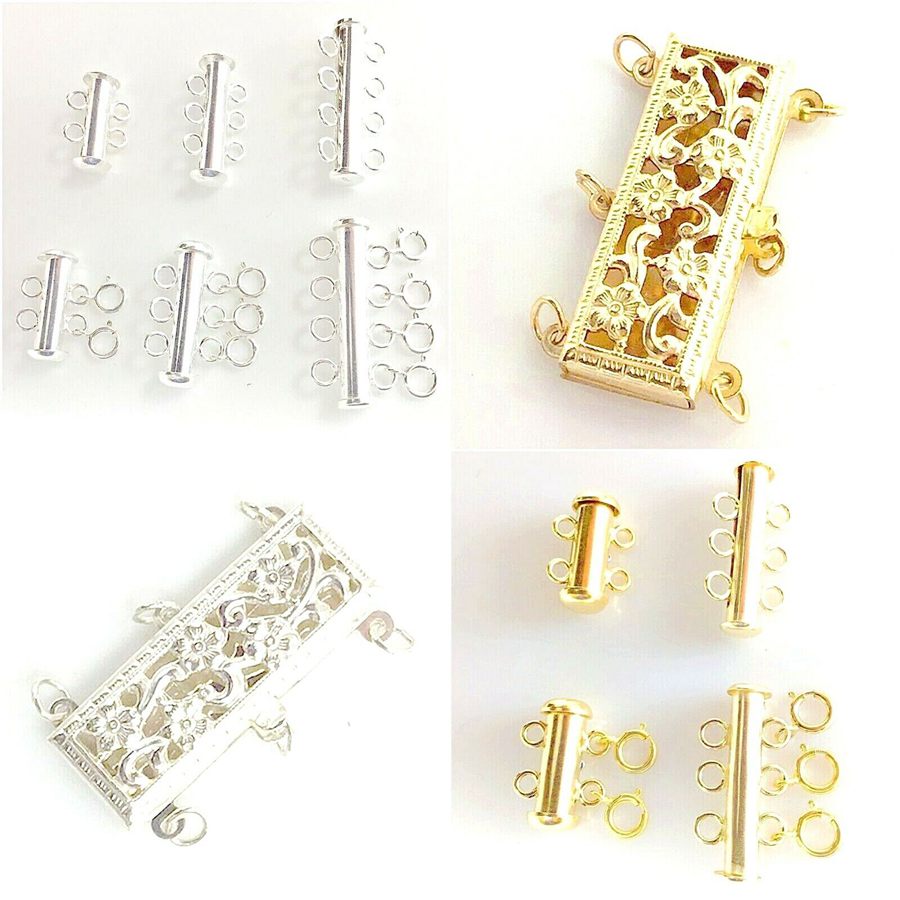Antique necklace clasps are not only a crucial component that holds cherished pieces together, but they also offer a glimpse into the rich history and craftsmanship behind the jewelry. As you delve into the world of antique necklaces, understanding the various clasp types and learning how to identify them will provide valuable insights into the age, origin, and potential value of these timeless treasures.
When beginning your antique clasp journey, it’s essential to familiarize yourself with common styles such as the barrel clasp, fishhook clasp, and box clasp. Equipping yourself with this knowledge not only aids in identifying authentic vintage pieces but also helps you discern the potential value of each item. Not all clasps may be considered equal in value; specific styles may hold more historical significance or rarity, making your antique necklace a truly coveted piece.
As you explore this fascinating aspect of antique necklaces, always keep in mind the importance of examining the clasps’ details and construction. Closely inspecting the materials used and the level of craftsmanship can reveal clues about the jewelry’s age and origin, ultimately giving you a better understanding of the treasure in your possession. Armed with this expertise, you’ll have both the confidence and knowledge to appreciate and cherish antique necklaces and their captivating clasps.
Table of Contents
The History & Evolution of Antique Necklace Clasps
Early Clasps
Throughout history, necklaces have been worn to adorn the neck for either cultural, religious, or aesthetic reasons. The first necklace clasps were simply functional and made from materials such as wood, bone, or metal. As you dive deeper into the world of antique necklace clasps, you’ll notice that early clasps often included T-bar and hook-style clasps designed for ease of use.
Box Clasps and Barrel Clasps
In the Georgian and Victorian eras (late 1700s to early 1900s), various styles of clasps were developed to complement the intricate designs of the necklaces. Box clasps, also known as tab insert clasps, gained popularity due to their secure and discreet nature. Barrel clasps, on the other hand, featured an elongated design with decorative carvings outside of the cylindrical enclosure.
Spring Ring Clasps and Lobster Claw Clasps
During the late 19th and early 20th centuries, the invention of the spring ring clasp and lobster claw clasp revolutionized the world of necklace clasps. These clasps were more secure and easier to use than their predecessors. The spring ring clasp features a circular ring with a spring-loaded mechanism, while the lobster claw clasp is named for its resemblance to a lobster’s claw and comprises a spring-loaded lever.
Magnetic Clasps and Toggle Clasps
In the mid-20th century, magnetic clasps began to make their appearance. These clasps consist of two magnetized pieces that secure a necklace when close to one another. This type gained popularity for its ease of use, making it particularly suitable for those with limited dexterity. Moreover, toggle clasps also became popular for their simple design and artistic appeal. These clasps consist of a bar slipping through a loop made of the same material.
Recognizing the different types of antique necklace clasps will not only help you in determining the age and authenticity of necklaces but also aid you in understanding the value and evolution of these beautiful pieces of jewelry. Keep these historical developments in mind as you explore and admire antique necklaces from various periods.
How to tell if Necklace Clasp is Antique or Old
To determine if a necklace clasp is antique or old, you can start by examining its style and materials. Over time, clasps have evolved, allowing for a better understanding of the time period during which a specific clasp was made.
First, familiarize yourself with common clasp types found in antique necklaces:
- Box clasps: Often used with pearl strands, they have a box-like shape usually made of metal.
- Spring rings: A circular clasp with a spring mechanism.
- Lobster clasps: Similar to spring rings but with a more elongated shape, lobster clasps were invented in the early 1900s.
- Push and sliding clasps: These are older clasps typically found on antique necklaces and can cost between $200 and $300.
When examining the clasp, look for the following characteristics:
- Material: Older clasps were often made of brass, sterling silver, or gold-filled materials. Newer clasps might be made of gold or silver-plated metals.
- Design: Pay attention to the intricacy of the design. Antique clasps often have more detailed and ornate patterns.
- Condition: Antique clasps may show signs of wear and tarnishing over time. A pristine clasp may be a sign of a newer or restored piece.
- Weight: Older clasps tend to be more substantial in weight compared to newer clasps made with lightweight materials.
- Hallmarks: Look for any hallmarks or stamps on the clasp. These may indicate the manufacturer, metal content, and age of the piece. Be aware of hallmarks that could be reproduced or altered to deceive buyers.
You can also consult online resources and guides about antique and vintage necklace clasps, which can provide visual examples and further information about dating and valuing necklace clasps.
6 Types of Antique Necklace Clasp and Their Values
Lobster Claw Clasp
Lobster claw clasps are popular fasteners due to their ease of use and secure closure. You’ll often find these on vintage necklaces, and they can add value to your collection. Lobster clasps are typically made from gold, silver, or copper.
Fishhook Clasp
Fishhook clasps are delicate and elegant fasteners used in vintage necklaces. The hook features a small loop that sits inside the other side of the clasp, securing the two ends together. These clasps can be found in various materials such as gold, silver, and copper. Due to their intricate design and age, fishhook clasps can contribute to the value of your antique jewelry piece.
Box Clasp
Box clasps are rare and valuable in the world of antique jewelry. The clasp consists of a small push tab inside a circular or square box. When the tab is pushed down, it releases the two ends of the necklace. These clasps frequently feature intricate designs and may contain precious gemstones.
Hook Clasp
Hook clasps, reminiscent of a shepherd’s hook, were commonly used in the 1950s and 1960s to attach multi-stringed necklaces. These clasps contribute to the charm and value of vintage pieces. Hook clasps can be found in various materials, including gold and silver.
Barrel Clasp
Barrel clasps were a popular fastener in antique necklaces. As the name suggests, they consist of two barrel-shaped ends that screw together. The barrels can be plain or feature intricate designs, adding value to your necklace. Barrel clasps are available in materials like gold and silver.
Toggle Clasp
Toggle clasps are another popular vintage fastener, featuring a bar and a ring. The bar is threaded through the ring, providing a secure closure for your necklace. Toggle clasps can be plain or adorned with decorative elements, contributing to the value of your piece. They can be found in various metals such as gold and silver.
When assessing the value of an antique necklace and its clasps, consider the materials, design, and rarity of the clasp. Pay close attention to hallmark and stamps, as they can increase your necklace’s worth. By understanding the different types of clasps and their values, you can better appreciate the beauty and history behind your antique jewelry.
Materials and Designs
In this section, we will explore various designs and materials commonly found in antique necklace clasps. By understanding these aspects, you can identify and appreciate the unique characteristics of each type of clasp.
Filigree
Filigree is an intricate metalwork technique that uses thin threads of metal, usually gold or silver, to create delicate and ornate patterns that are visually stunning to the beholder. In antique necklace clasps, filigree designs were often employed to increase the value and uniqueness of the piece, and can be used as a way to identify older pieces.
- Keep an eye out for fine detail and craftsmanship
- Gold and silver are common metals used in filigree work
Plastic
Contrary to what one might think, plastic has been used as a material in antique jewelry, particularly during the Art Deco period. Different types of plastic, such as Bakelite, celluloid, and Lucite, were used in the creation of antique necklace clasps, giving them a unique appearance and feel.
Here are some things to look for when identifying plastic clasps:
- Warm, rich colors or swirl patterns
- Light weight, as plastic is less dense than metal
- A distinct smell, particularly with Bakelite (rub it and if it produces a strong, distinct odor, it might be an antique plastic clasp)
Glass
Glass is another material that has been used in antique necklace clasps. These clasps can be particularly eye-catching, as glass can mimic the appearance of precious gemstones like emeralds, rubies, and sapphires. Glass clasps have been popular throughout various periods in history, particularly during the Georgian and Victorian eras.
To identify glass clasps, pay attention to:
- The brightness and clarity of the glass
- The presence of any small air bubbles, indicative of hand-blown glass
- The weight, as glass is typically heavier than plastic but lighter than metal
By familiarizing yourself with the typical materials and designs used in antique necklace clasps, you can more confidently identify and value these unique pieces of jewelry.
10 Factors to Identify & Value Antique Necklace Clasp
1. Material
When identifying and valuing antique necklace clasps, the material used plays a significant role. These clasps can be made from various materials, such as iron, gold, or silver. It’s essential to understand the differences and the values they carry.
Iron Clasps
Iron clasps are relatively less valuable than their gold and silver counterparts. They can still hold some appeal for collectors or hobbyists interested in the history of jewelry making. Look for any signs of rust or corrosion, which may indicate its age and authenticity.
Gold Clasps
Gold clasps are typically more valuable than iron or silver clasps due to their precious metal content. The value can be determined by examining the hallmark or stamp indicating the type of gold used. Common gold purities include 10K, 14K, and 18K.
Antique Gold Clasps Average Valuation:
| Gold Purity | Average Valuation |
|---|---|
| 10K | $100 – $200 |
| 14K | $200 – $300 |
| 18K | $300 – $500 |
Silver Clasps
Silver clasps may not be as valuable as gold clasps, but they can still carry significance in the world of antique jewelry. Examine the hallmarks or stamps on the clasp to determine its silver purity. Sterling silver, for example, is typically marked with “925.”
Antique Silver Clasps Average Valuation:
| Silver Purity | Average Valuation |
|---|---|
| 800 | $50 – $80 |
| 925 | $80 – $150 |
When identifying and valuing antique necklace clasps, keep these factors in mind, and carefully examine the material, hallmark, or stamp of each clasp to obtain an accurate estimate of its value.
2. Age
When identifying and valuing antique necklace clasps, knowing their age can be useful. To determine the age of a clasp, you should examine its type, materials, and any hallmarks present. Here is a brief overview of a few widely-used antique necklace clasps:
- Box clasps: Used since the early 20th century, these clasps generally feature a square or rectangular design with a small, spring-loaded lever to open and close the clasp.
- Spring ring clasps: Invented in the early 1900s, they consist of a circular metal ring with a spring mechanism that opens when pressed and automatically closes, securely attaching the two ends of the necklace.
- Fishhook clasps: These claps were commonly used from the 1920s to 1950s and feature a hook that is inserted into a tube or barrel-like enclosure.
- Lobster claw clasps: Despite not being antique, these clasps, invented in 1996, are still worth noting due to their popularity. Shaped like a lobster’s claw, they are opened by pressing a small lever.
To help with your valuation process, here’s a table that shows the average value for antique necklace clasps based on their age:
| Type & Age of Clasp | Average Valuation |
|---|---|
| Box Clasp (Early 20th Century) | $200 – 300 |
| Spring Ring Clasp (Early 1900s) | $150 – 250 |
| Fishhook Clasp (1920s – 1950s) | $100 – 200 |
| Lobster Claw Clasp (Modern) | $50 – 100 |
Please remember these values are approximate and may vary depending on other factors like materials, condition, and rarity.
When inspecting a clasp, also pay attention to the materials used. Sterling silver, gold, or platinum clasps will typically bear markings like “925,” “14K,” or “Pt” to signify their metal content. These hallmarks can impact the value and also help confirm the clasp’s age. For example, a box clasp marked “14K” likely dates back to the early 20th century, while a lobster claw clasp stamped with “925” would signify a more modern piece.
3. Design
When identifying and valuing antique necklace clasps, it is important to consider their design. Clasps come in various styles and have evolved over time. By examining the type of clasp and the materials used, you can gain insight into the age and potential value of the necklace.
Here is a table indicating the average valuation of antique necklace clasps based on their design:
| Clasp Design | Average Valuation |
|---|---|
| Barrel Clasp | $200 – 300 |
| Stone or Bone Clasp (3 – 4mm thick) | $300 – 400 |
| Cast Iron Clasp (1 – 2mm thick) | $100 – 200 |
| Hook and Eye Clasp | $75 – 125 |
| Spring Ring Clasp | $50 – 75 |
When examining a clasp, pay attention to the details in the design. For example, an authentic barrel clasp may have a brassy appearance, indicating its antique nature. Additionally, the thickness of a clasp can offer clues about its material, such as stone or bone, or cast iron. These factors impact the valuation of the clasp and the overall necklace.
In addition to the clasp design, keep in mind the materials used in the clasp. Older materials, such as brass and copper, can increase the value of the necklace if they are in good condition. Another aspect to consider is the presence of any markings or stamps, which can help in identifying the clasp’s origin and verifying its authenticity.
Finally, evaluate the overall craftsmanship of the clasp. Superior craftsmanship is often indicative of a higher value, while poor craftsmanship or evidence of repair can decrease the value. To ensure you are accurately assessing the clasp, consult experts or research reputable resources to become more familiar with antique clasp designs and their corresponding values.
Remember that the value of antique necklace clasps can vary, and this guide serves to provide an estimate. Always consult multiple sources and follow best practices when examining antique jewelry to properly assess its value.
4. Maker’s Mark
When identifying antique necklace clasps, the maker’s mark is a crucial aspect to consider. A maker’s mark is a stamped quality control marker that represents either the original crafter or a firm/manufacturer responsible for guaranteeing the quality of the piece. Maker’s marks can take the form of the full name, initials, or symbols associated with the jewelry maker.
To find the maker’s mark on your antique necklace clasp, you can use a 10x loupe to inspect the piece closely. Keep in mind that some marks may be tiny, so you might need to spend some time examining your necklace before finding the maker’s mark.
Evaluating antique necklace clasps based on their maker’s mark is essential, as it allows you to determine the authenticity and value of the piece. The following table lists some common and popular makers and their average valuations:
| Maker’s Mark | Average Valuation |
|---|---|
| Tiffany & Co. | $400 – $600 |
| Cartier | $500 – $700 |
| Van Cleef & Arpels | $600 – $800 |
| David Webb | $350 – $500 |
| Bulgari | $450 – $550 |
These valuations are to be used as a reference, and the actual price of your antique necklace clasp may vary. Keep in mind that specific factors such as condition, rarity, age, and material can greatly impact the value of your piece.
In sum, when identifying and valuing antique necklace clasps, knowing the maker’s mark is essential. Determining the maker can provide you with valuable information on your piece’s authenticity and its potential value in the market. Always be diligent while examining the clasp and use a trustworthy valuation guide for a more accurate assessment.
5. Condition
When examining antique necklace clasps for identification and value, the condition of the clasp plays a crucial role in determining its worth. In this section, we will explore factors that affect the condition and ultimately the value of clasps.
Material
The material of the clasp can impact its condition over time. Clasps made from more durable materials such as gold or silver will generally be in better condition compared to those made from less durable materials like brass or cast iron.
Patina
The patina, or surface appearance, of a clasp can indicate its age and help in its identification. A well-preserved patina adds value, while over-polished or damaged patinas can decrease the value of the clasp.
Wear and Tear
Normal wear and tear can impact the condition of clasps. Scratches, dents, and bent parts can affect the value negatively, whereas well-maintained clasps fetch higher prices.
Functionality
A functional clasp, even if it is vintage, is more valuable than a broken one. Ensure that the clasp is in good working order, can be opened and closed easily, and securely holds the necklace in place.
Valuation Table
Here is a valuation table for the factors affecting the value of antique necklace clasps.
| Factors Affecting Value | Average Valuation |
|---|---|
| Gold clasp, good patina, minimal wear | $500-600 |
| Silver clasp, good patina, minimal wear | $450-500 |
| Brass clasp, good patina, moderate wear | $300-350 |
| Cast iron clasp, damaged patina, heavy wear | $100-150 |
| Broken clasp with historical significance | $70-100 |
When identifying and valuing antique necklace clasps, consider the factors discussed in this section. Keep in mind that the values presented here are approximate and will vary based on the specific piece, its rarity, and the current market demand. Don’t forget to consult with experts and use multiple sources for accurate information when determining the value of your antique necklace clasps.
6. Rarity
When assessing the rarity of antique necklace clasps, it is essential to consider factors such as the type of clasp, its age, and its condition. By understanding these components, you can gain a better understanding of the value of your clasp.
Types of Antique Necklace Clasps
There are various types of antique necklace clasps, each with its own unique features and value. The more uncommon a clasp type, the higher its rarity and potential value.
| Clasp Type | Average Valuation |
|---|---|
| Spring Ring | $200 – $250 |
| Hook Clasp | $150 – $200 |
| Fishhook | $300 – $400 |
| Box Clasp | $250 – $350 |
| Barrel Clasp | $200 – $300 |
Age and Historical PeriodThe age and historical period of a necklace clasp can also contribute to its rarity. For example, clasps from the Art Deco era (1920s-1930s) are highly sought after by collectors and may fetch a higher price compared to clasps from more recent decades.
| Historical Period | Average Valuation |
|---|---|
| Georgian (1714-1837) | $400 – $600 |
| Victorian (1837-1901) | $350 – $450 |
| Art Nouveau (1890-1910) | $300 – $400 |
| Art Deco (1920-1939) | $450 – $550 |
Condition
Finally, the condition of your antique clasp plays a significant role in determining its rarity and value. Intact clasps with clear markings and minimal wear are generally more valuable than those with signs of significant use or damage.
| Condition | Average Valuation |
|---|---|
| Excellent | $400 – $500 |
| Good | $250 – $350 |
| Fair | $150 – $200 |
| Poor (Damaged or worn) | $50 – $100 |
Keep in mind that these valuations can vary depending on factors such as provenance, designer, and current market trends. It is always best to consult with a professional appraiser or antique jewelry expert for a more accurate assessment of your antique necklace clasp’s value.
7. Size
When examining the size of antique necklace clasps, there are a few key factors and details you should keep in mind. Understanding these attributes can help you in identifying particular pieces as well as evaluating their value.
First, take note of the clasp’s thickness. Using a caliper, measure the thickness of your clasp. If the clasp appears to be a matte finish and measures 3-4mm thick, it could be made from stone or bone. On the other hand, if it’s only 1-2mm thick with an oxidized finish, it might be cast iron.
The average valuation of clasps based on their size can be better understood through the table below:
| Clasp Thickness & Material | Average Valuation |
|---|---|
| 3-4mm Stone or Bone Clasp | $250 – 350 |
| 1-2mm Cast Iron Clasp | $200 – 300 |
| 4-5mm Brass or Copper Clasp | $400 – 500 |
| 2-3mm Silver or Gold-Plated Clasp | $500 – 600 |
Additionally, it’s important to consider the overall dimensions of the clasp. Larger clasps can be indicative of older and more valuable pieces, whereas smaller clasps are more common in modern, mass-produced necklaces.
Lastly, pay attention to the intricacy and craftsmanship of the clasp. Exquisite details or fine craftsmanship may signal a higher value for the piece. Keep in mind that the quality of the materials used also plays a role in the value of the clasp.
Remember these factors as you examine antique necklace clasps to accurately identify and determine their value.
8. Gemstones
When identifying and valuing antique necklace clasps, it’s crucial to consider the gemstones that may be featured in the clasp’s design. The presence of gemstones can significantly increase the value of the clasp. In the following paragraphs, we will discuss some factors that can affect the valuation of antique necklace clasps with gemstones, along with approximate valuation tables.
Type of Gemstone
Different gemstones have varying values. Here’s a table showcasing the average valuation for clasps with specific gemstones:
| Gemstone | Average Valuation |
|---|---|
| Diamonds | $1,000 – 1,200 |
| Emeralds | $800 – 1,000 |
| Rubies | $700 – 900 |
| Sapphires | $600 – 800 |
| Semi-Precious Stones* | $200 – 300 |
*Examples include amethyst, topaz, citrine, and garnet.
Carat Weight of the Gemstone
The carat weight of the gemstone also plays a vital role in determining the value of the clasp. Larger carat weights generally result in higher valuation.
| Carat Weight Range | Average Valuation |
|---|---|
| Less than 1 carat | $300 – 500 |
| 1 – 3 carats | $500 – 1,000 |
| 3 – 5 carats | $1,000 – 2,000 |
| Over 5 carats | $2,000 and up |
Gemstone Setting
The type of gemstone setting used in the clasp’s design can also affect the valuation. Some settings are considered more desirable and valuable than others.
| Gemstone Setting | Average Valuation |
|---|---|
| Prong Setting | $600 – 800 |
| Bezel Setting | $500 – 700 |
| Pave Setting | $400 – 600 |
| Gypsy/Flush Setting | $300 – 500 |
To help you identify and value your antique necklace clasp with gemstones, use these tables in combination with other factors discussed in this guide. Remember that each antique item may have special characteristics; therefore, value estimations should be considered with care.
9. Patina
When examining antique necklace clasps to determine their value, one important factor to consider is the patina. Patina refers to the natural tarnish that develops on the surface of certain metals, such as gold, silver, and bronze, over time. It can provide valuable information about the age, history, and authenticity of a piece, which will help you to properly valuate your antique necklace.
A well-developed patina can create a beautiful, aged appearance that is desired by many collectors. However, it can sometimes be difficult to differentiate a genuine patina from an artificially created one. Genuine patinas often have irregular textures and may even show some wear, whereas artificial patinas can typically be identified by their uniform appearance.
To further understand how patinas can affect the valuation of antique necklace clasps, here’s a table representing different patina types and their average valuations:
| Type of Patina | Average Valuation |
|---|---|
| Genuine Patina with Irregular Texture | $400 – 550 |
| Genuine Patina with Moderate Wear | $350 – 450 |
| Artificial Patina with Uniform Appearance | $200 – 300 |
| No Patina | $100 – 200 |
Keep in mind that the age, type of metal, and intricacy of the design can also significantly affect the value of the clasp. For example, gold clasps are generally more valuable than silver or iron ones, and those with more intricate designs or hallmarks will be worth more. Additionally, certain types of clasps, such as hook and box clasps, are rarer and can command higher prices.
Don’t forget to thoroughly inspect the clasps in question, paying close attention to their overall appearance, texture, and wear. This will help you to accurately determine whether the patina is genuine or artificial, and ultimately, provide you with a better understanding of the clasp’s value.
10. Historical Significance
Necklace clasps have evolved over time, reflecting the materials, craftsmanship, and artistic styles of the corresponding era. They are essential not only for practical purposes, but also for their significant role in the historical context of jewelry making.
In the early 18th century, simple hook and eye clasps were common. These basic clasps, often made of bronze or brass, provided a secure way to fasten a necklace. As the design of necklaces and other jewelry evolved, so too did clasps. The mid-18th century saw a rise in the use of more intricate and decorative clasps, such as box clasps and screw mechanisms. These were often adorned with precious stones or intricate metalwork, and became a statement piece in themselves.
The late 19th and early 20th century saw a trend towards using more delicate clasps, like the fishhook clasp commonly found on pearl necklaces from the 1920s. These smaller, more subtle clasps often featured intricate metalwork as well, and could be quite valuable depending on the materials and craftsmanship.
Below is a valuation table with typical values for different types of antique necklace clasps, based on their design, materials, and historical significance.
| Antique Clasp Type | Average Valuation |
|---|---|
| Hook and Eye, Brass or Bronze (18th century) | $100 – 150 |
| Box Clasp, Gold or Silver (mid 18th century) | $200 – 250 |
| Screw Mechanism, Gold or Silver (mid 18th century) | $250 – 300 |
| Fishhook Clasp, Gold, Silver or Platinum (1920s) | $300 – 400 |
Remember, these values are approximate and based on average prices for antique necklace clasps. A professional appraiser will take factors such as condition, rarity, and other historical details into account when determining an item’s value.
Final Thoughts
In your quest to identify antique necklace clasps, understanding the different types of clasps and their usage across various time periods is essential. Familiarize yourself with the following clasps:
- Spring ring: This clasp has been popular since the early 20th century and comes in various sizes and designs. They contain a small spring mechanism that keeps the clasp closed.
- Fish hook: Commonly used on pearl necklaces, fishhook clasps have a hook that fits into an oval or round-shaped box. These were popular during the Art Deco period.
- Fold-over: A fold-over clasp, mostly used on bracelets but sometimes on necklaces, has a hinged closure that folds over a bar. These clasps were popular in the mid-20th century.
Additionally, pay attention to the style and materials of your antique necklace, as these can help determine its value. For example, pieces with high-quality materials like gold, silver, and natural gemstones tend to hold more value than costume jewelry made with base metals and synthetic stones. Familiarize yourself with hallmark stamps, which indicate the type of metal used and often give clues about the country of origin and manufacturer.
When evaluating the value of an antique necklace, condition is a critical factor. Pieces with missing stones, worn metal, or damaged clasps will typically hold less value. However, don’t be too hasty in repairing your necklace, as professional restoration may help you preserve its value. Consult with an expert before making any significant alterations.
As you become more skilled at identifying and valuing antique necklace clasps, try visiting antique shops, auctions, and online marketplaces to find pieces that interest you. By comparing your findings with well-established guides and consulting with other enthusiasts or professionals, you’ll gain a greater understanding of this fascinating and often lucrative hobby.

